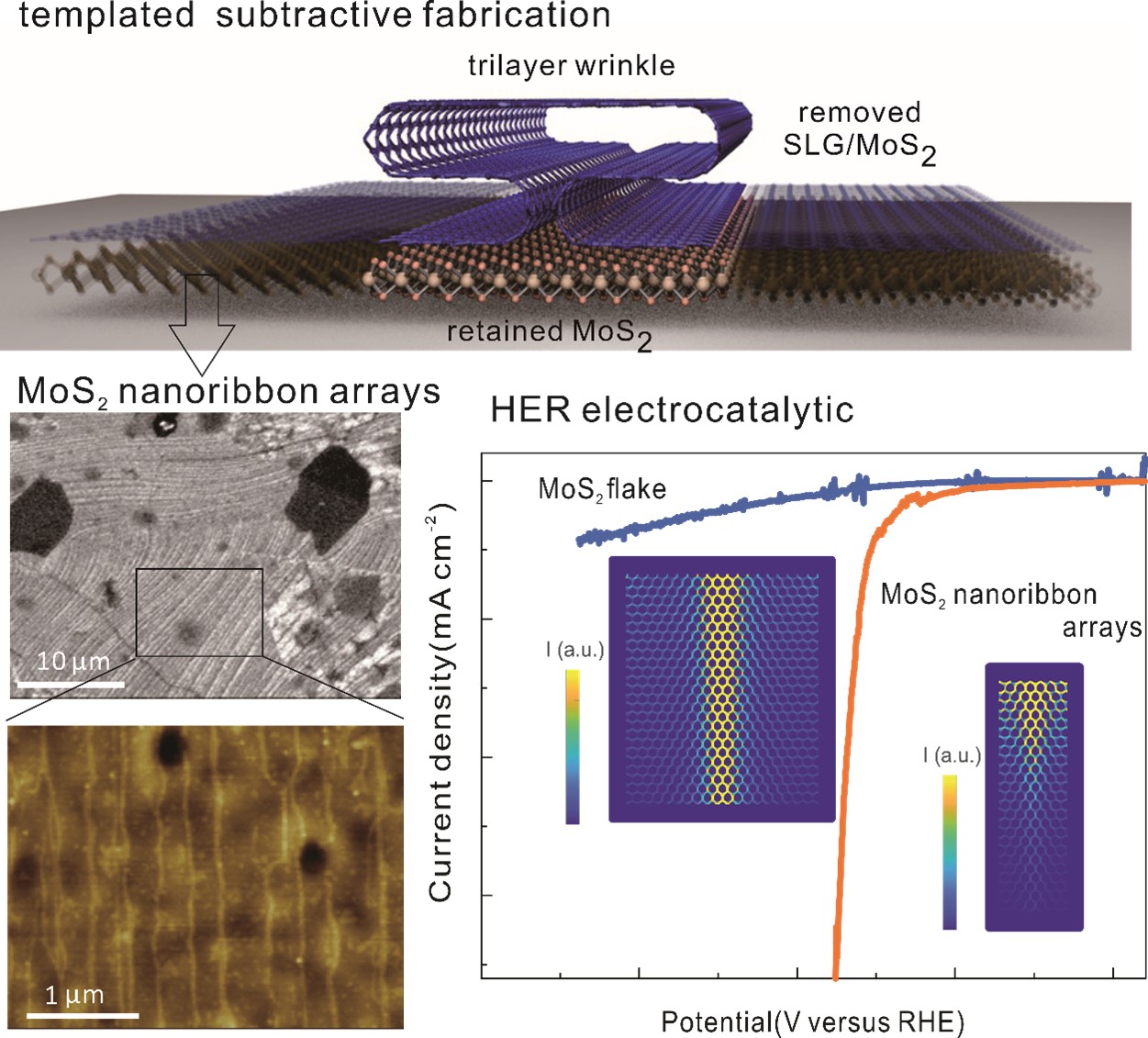

Edge-dominated hydrogen evolution reactions in ultra-narrow MoS2 nanoribbon arrays
(Ding-Rui Chen in Prof. Hsieh’s group)
Hydrogen (H2) is considered to be an ideal fuel for future energy generation and storage, emphasizing the importance of high-performance electrocatalysis. MoS2 edges exhibit ideal energetics for hydrogen evolution reactions (HER) electrocatalysis if challenges in their fabrication are addressed and kinetics are understood for further enhancement. We recently developed a novel approach called Templated Subtractive Patterning Process (TSPP), yielding high quality, unprecedented aspect ratio, and high density of ultranarrow MoS2 nanoribbon arrays compared to other patterning strategies. This result makes our work ideally suitable for serving as a powerful platform to study the edge-dominated electrochemical reaction and shows significantly increased reaction kinetics, as evidenced by a ~200-fold enhancement in turn-over frequency (TOF) and an 18-fold increase in exchange current density. Impressively, the TOF of MoS2 nanoribbon arrays is better than those previously reported for MoS2 edges, aligned layer MoS2, amorphous MoS2, and is close to that of the ideal Pt catalyst. Our experimental results and current simulation distribution reveal the mechanism behind these improvements, attributed to increased charge transfer efficiency from the basal plane toward the edge sites. This work sheds light on the mechanism of edge-enhanced HER and provides a way for nanoribbon fabrication.
This work has been published in Journal of Materials Chemistry A, 11, 15802-15810,(2023)
https://pubs.rsc.org/en/content/articlelanding/2023/ta/d3ta01573d



